Welsh Rarebit
Welsh rarebit, also known as Welsh rabbit, contains no rabbit and in fact is not a meat dish at all. It consists of a cheese and beer sauce generally served over toasted bread. I’m going to use the two terms, rarebit and rabbit, interchangeably in this piece but my preference is for rabbit and that’s how I pronounce the word “rarebit” in any case.
My first encounter with the idea of Welsh rabbit came in the form of a throwaway line in a very silly novel I’d “borrowed” from my mom. I read a lot as a kid and especially as a teenager–mostly science fiction and fantasy, some non-fiction science books, the occasional horror novel. When nothing else presented itself, I would dig into the massive collection of paperback mystery books my mother owned. Mom’s tastes run toward the cozy end of the genre–Rex Stout’s Nero Wolfe books were about as hard-boiled or pulpy as I could find on her shelves, and I ate those up quickly, and reread them all from time to time.
When I ran out of the harder stuff, I’d take what I could find. Eccentric old ladies, observant cat enthusiasts, and the variety of nutballs and cranks these novels centered around were not the stuff to fire the imagination of a teenage boy but they kept my mind busy in lieu of cartoons or Atari games.
Charlotte MacLeod’s Peter Shandy books follow a college botany professor with a knack for solving grisly murders. However, the 5th book in the series, The Curse of the Giant Hogweed, takes a different path. In this book, he and two of his fellow professors experience a shared delusion that they have traveled to the past, embarking on a quest to aid a lord’s nephew in recovering a beloved pet. Early in the book, while availing themselves of an old woman’s hospitality, the following exchange occurs:
“I suggest, madam, that while you eat what remains of this palatable stew, for which we thank you heartily, I melt my piece of cheese in your cooking pot. You would not by chance have any bacon in the house?”
“I have but one small rind, your worship.”
“That will suffice. The bacon, you see, is suspended over the pot so that its fat drips down and imparts its flavor to the cheese. The melted cheese can then be served over crackers or toasted bread, should any be available.”
“I have flat cakes of grounden acorns,” she replied. “ They could be atoasting by my fire whilst ye melteth ye cheese. ’Tis a woundily fine substitute for a rabbit, forsooth. Never in this land hath any heard of such a dish.”
“By George, Dan, I think you’ve just invented Welsh rabbit,” cried Peter.
The Curse of the Giant Hogweed, Charlotte MacLeod, 1985, pp 37-38.
It’s a goofy book, and a goofy scene, but the idea of Welsh rabbit–I did eventually work out that it’s more often spelled rarebit these days–stuck in my mind. I tried melting cheddar cheese with bacon grease but ended up with broken curdled sauces. It was some time before I learned some of the secrets of sauce making, the use of starch to block the clumping of proteins, to keep the sauce smooth.
I’m Hunting W(elsh R)abbit
Though the words “Welsh rarebit” occur on a number of menus around town–as a description of a cheese sauce to be poured over fries, or to dip soft pretzels in–I only found a few places serving it as a kind of open face sandwich, over toasted bread. They tend to be British-style pubs, like Pleasant House in Pilsen.

Pleasant House, originally in the Bridgeport neighborhood, grew a reputation for their meat pies and other baked goods, before opening this full-service pub on Halsted. The menu runs toward British pub fare–scotch egg, bangers and mash, curry chips, as well as the meat pies they’ve always been known for, such as the pork pie plate I ordered on a recent visit, served with whole grain mustard, bleu cheese, pickles and salad.

Pork pie plate at Pleasant House Pub 
Pork pie plate at Pleasant House Pub
On the same visit, Mindy tried their fish and chips–an edible work of art.
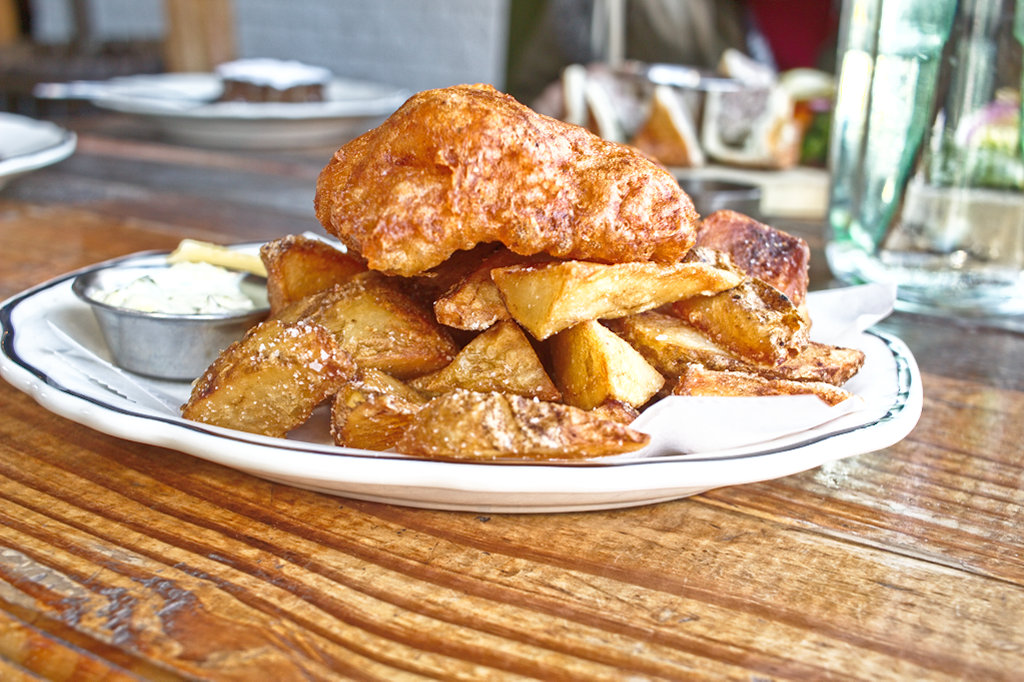
The reason for our lunch there though was the Welsh Rarebit. This was a single slice of toasted sourdough, carefully covered with a layer of beer cheese sauce, browned under a broiler, garnished with parsley and chives.
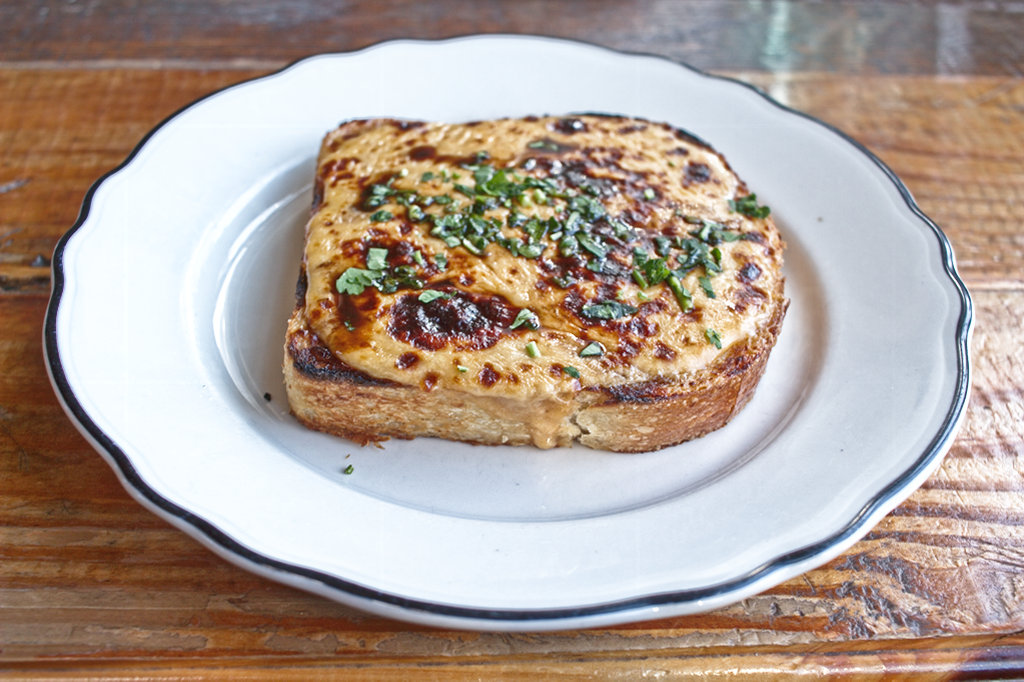
It was a good slice of bread, thick-cut, toasted well, crisp but just softening up under the layer of sauce. The sauce tasted of cheddar, beer, a hit of Worcestershire. It was good. Not the highlight of the meal, but tasty, and worth having again if I were to return.
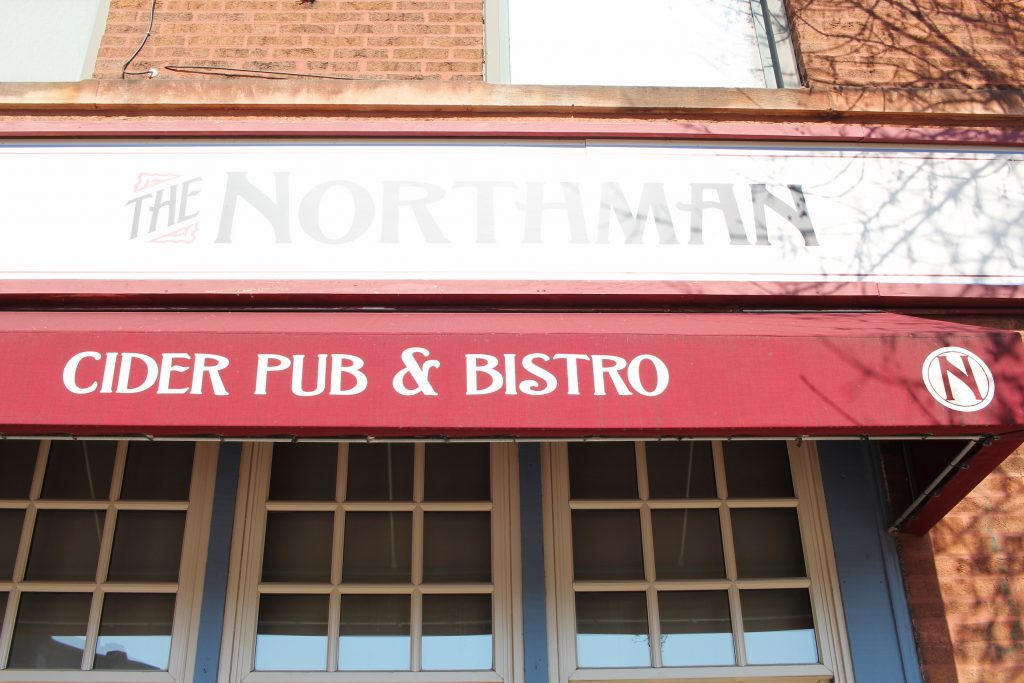
Unfortunately, by the time this will be published, The Northman, a cider pub in Chicago’s North Center neighborhood, will be no more. February 23rd 2020 was its last day in business, and they were doing brisk business on the final weekend. Mindy, Damian, and I stopped in for a drink and a bite, and were lucky enough to get a table.
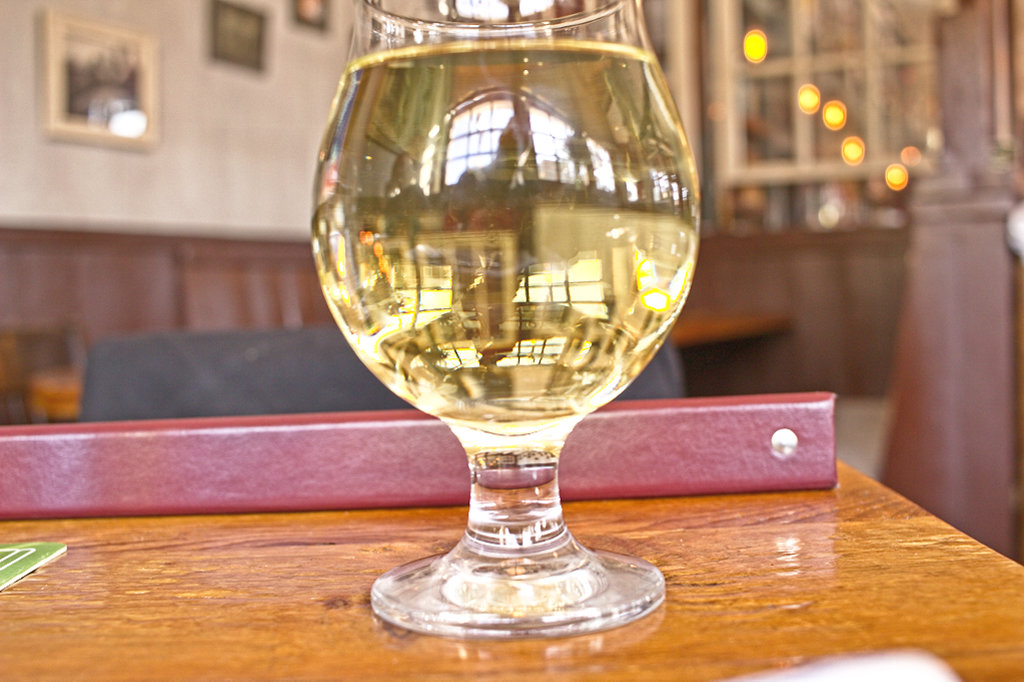
The Northman’s Welsh rarebit sauce is made with their house cider, giving it a slight acidity and bright fruitiness enhancing the white cheddar of the sauce. The sauce was served poured over a pile of toasted sections of sourdough bread. Again, the contrast of the crisp-toasted bread and the gooeyness of the cheese sauce was a highlight, but the sauce was head and shoulders above what we’d had previously.
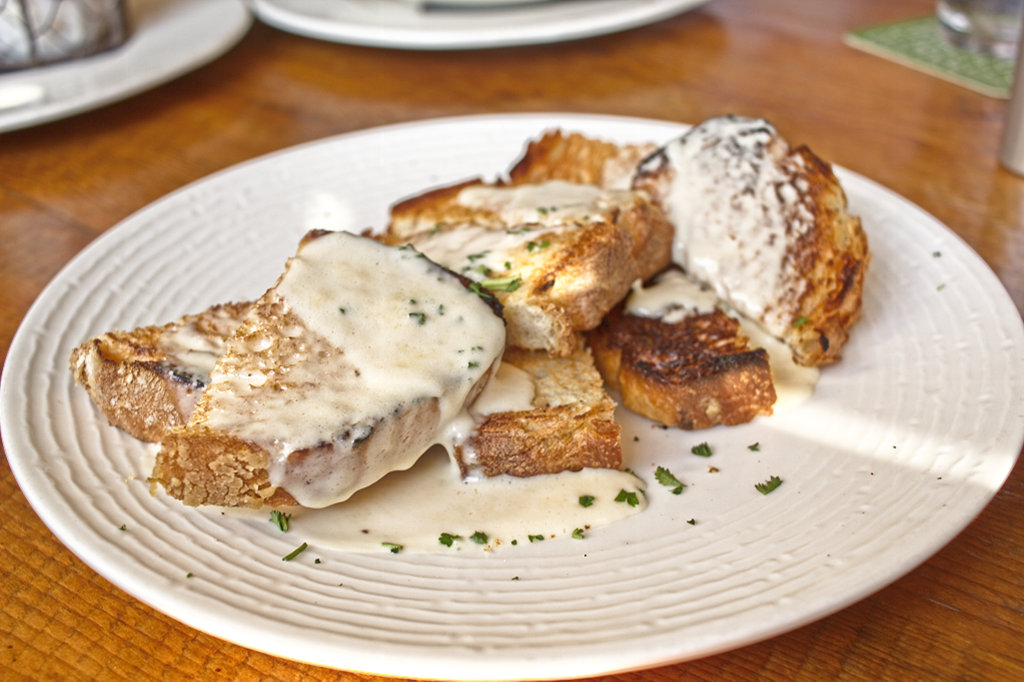
The sauce made an appearance again in Damian’s croque monsieur, along with the toasted sourdough, joined by ham and gruyere cheese.
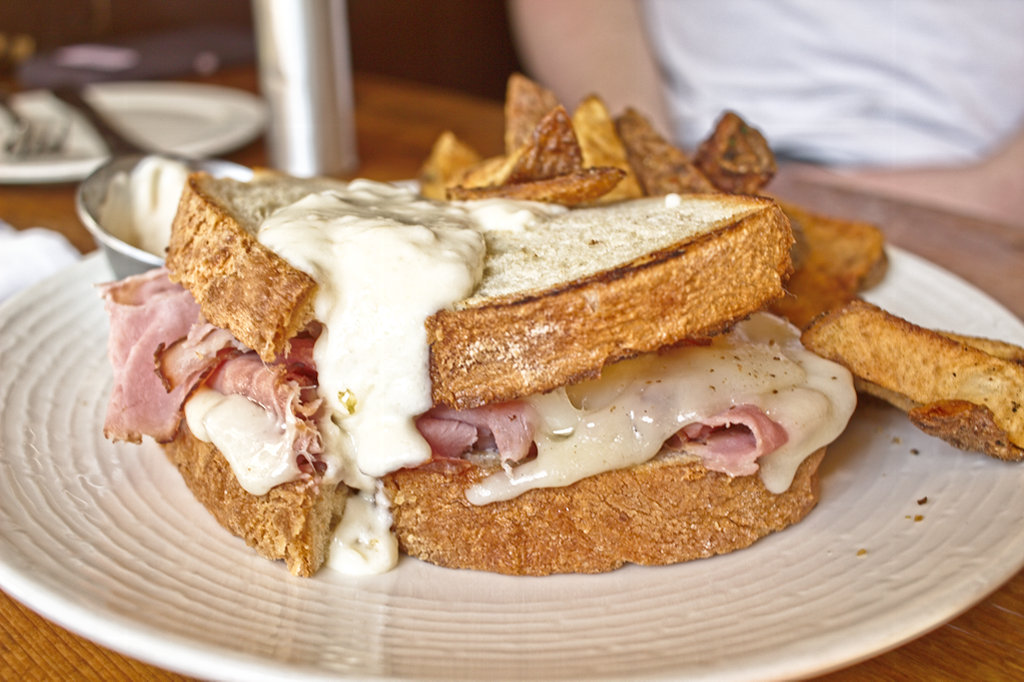
I wasn’t quite as taken with the doner kebab I ordered, but I was quite full from the Welsh Rarebit, and enjoying a few ciders. It was wrapped in a good flatbread, well-griddled, and served with some good chips.
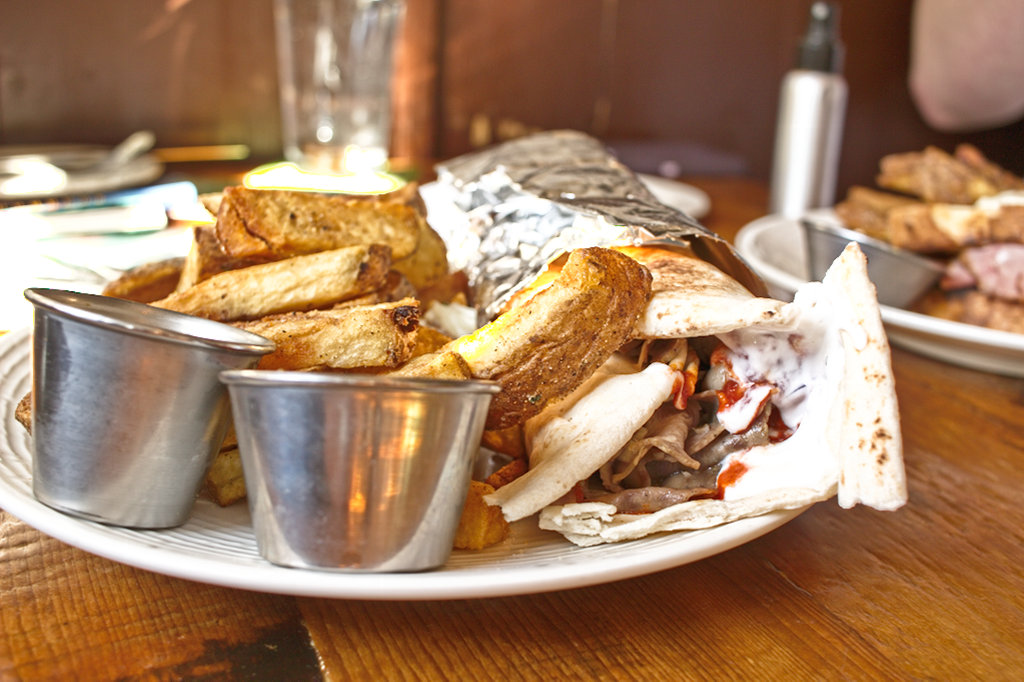
Mindy’s lunch was a slightly unusual choice, beignets with a sweet dipping sauce, which were spectacular when they hit the table but faded with each passing moment.
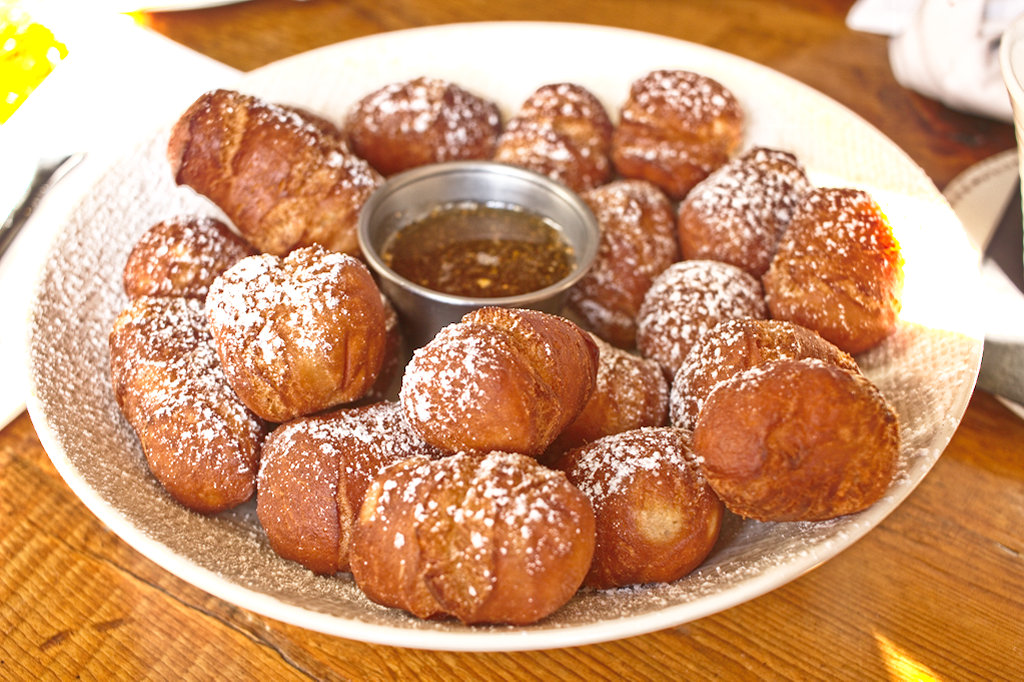
It’s a shame I didn’t get to the Northman until their last weekend in existence, but they still have a seasonal location on Chicago’s Riverwalk, and hopefully that place will still serve their cheese sauce when it reopens later this year.
Not W(elsh R)abbit Season
So why is it called Welsh Rabbit (or Rarebit, in the more modern usage)? A common explanation is that for the impoverished Welsh, cheese was the closest thing they’d see to actual meat on their tables, even a poor man’s meat like rabbit. Others say this explanation is English propaganda.
It is believed the name originated in the 18th century as an English insult to the Welsh; while rabbit was a poor man’s meat in England, in Wales the poorer man’s “meat” was cheese.
Historical Recipe #4 Welsh Rarebit by Emery Lee, https://georgianjunkie.wordpress.com/2011/09/24/historical-recipe-4-welsh-rarebit/
The thing is, this is not the only nominally Welsh dish wherein a combination of bread and cheese is named after meat. Glamorgan sausage is a type of croquette made of Welsh Caerphilly cheese, leeks, and bread crumbs, bound together by egg yolks, and then breaded and fried.
Caerphilly is a mild white cheese, with a texture more crumbly than havarti and a flavor less briny and funky than feta, but with characteristics reminiscent of each. For Glamorgan sausage, it’s shredded, then mixed with sauteed leeks, bread crumbs, thyme, nutmeg, mustard, and egg yolk, then shaped into sausagelike cylinders and allowed to firm up in the refrigerator for a time.
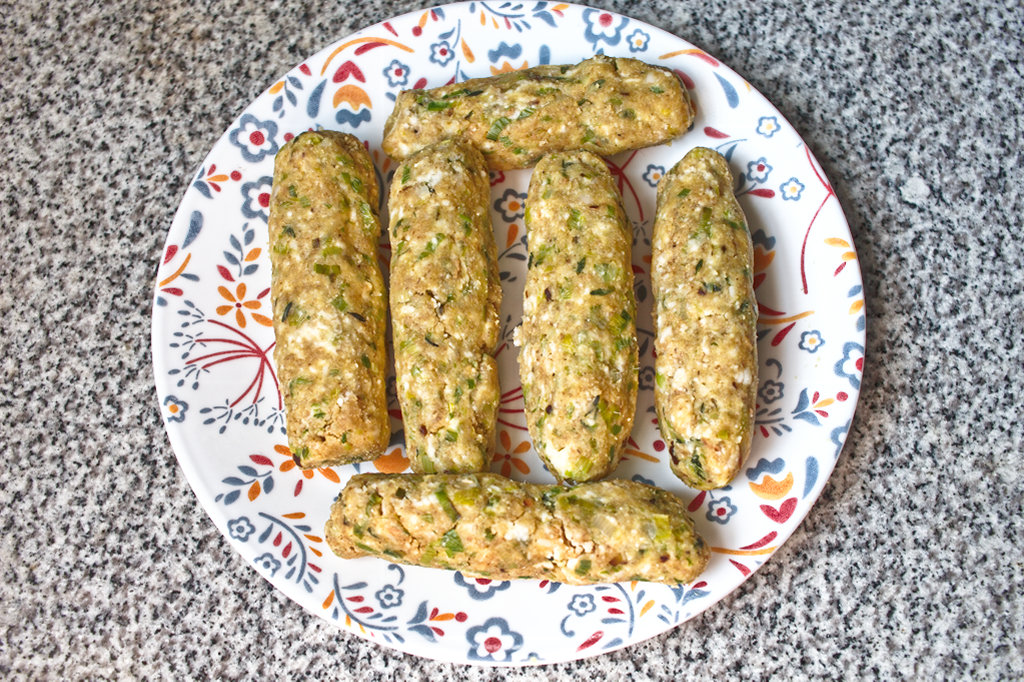
Then they are breaded using the standard flour/egg wash/breadcrumb technique and fried. I pan-fried mine in butter and then finished them in the air fryer to maximize crispness of texture and richness of flavor.
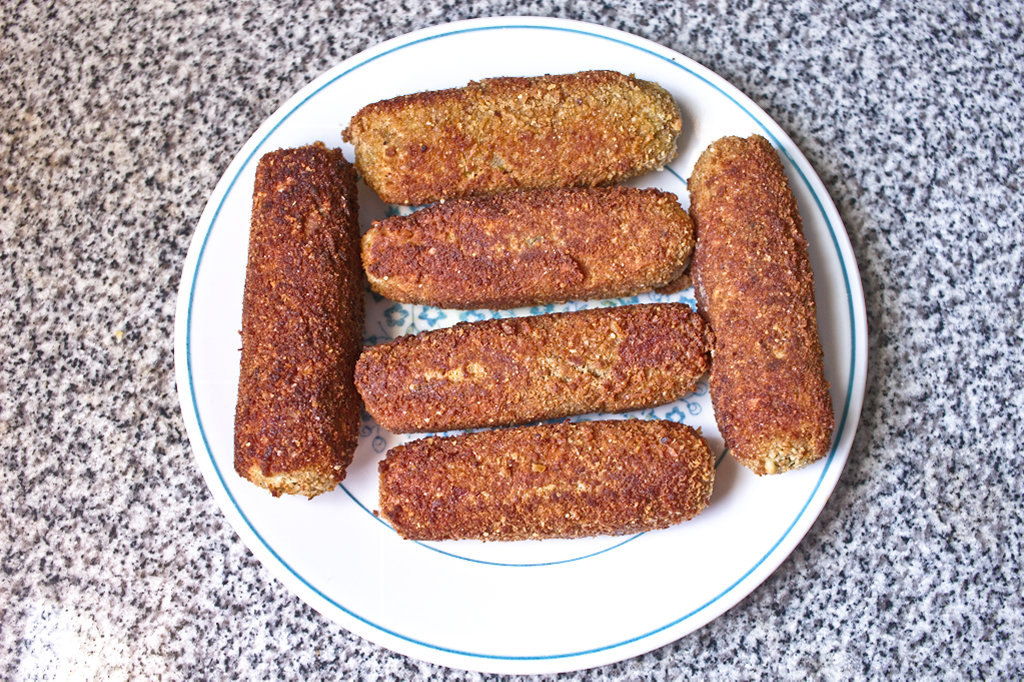
The shape is the only thing about this that is sausagelike. Outside there’s a crisp layer of breading. The filling reminds me of some spinach “meatballs” Mindy and I used to make when the kids were young, a recipe from a Disney cookbook I believe, spinach and parmesan, breadcrumbs and eggs, shaped into balls and baked. They were quite good, despite the recipe’s provenance, and these “sausages” were delicious as well,
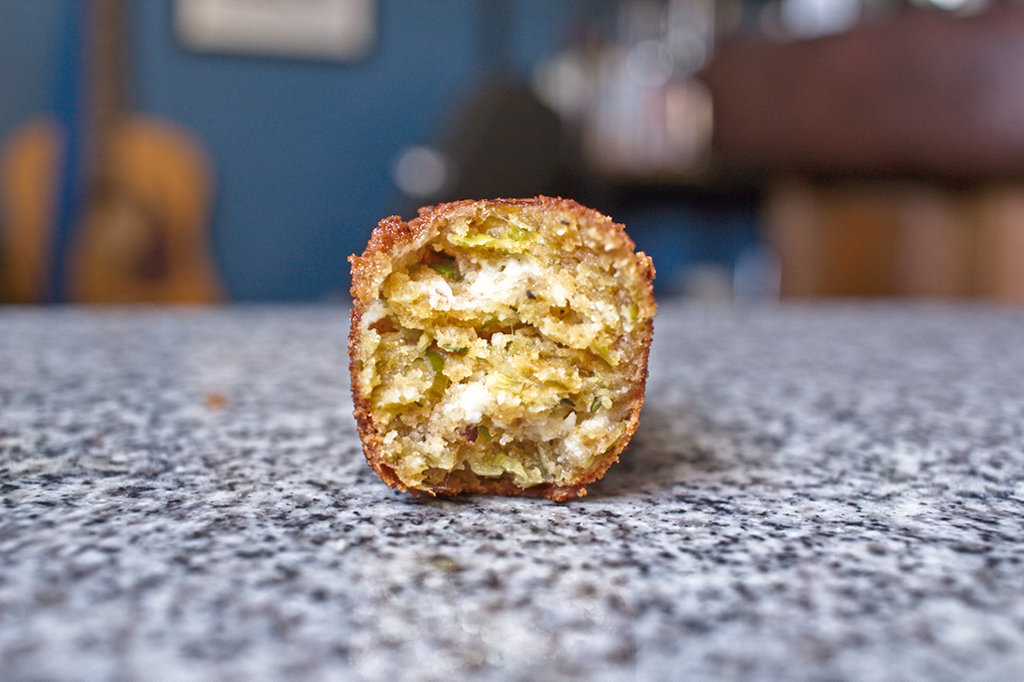
Different serving suggestions call for more English mustard, chili relish, or apple chutney on the side for dipping. Intrigued by the apple chutney idea, I went for the next-best thing and got out the smoked apple butter recently given to me by fellow Tribunal author Brian. Something a little savory, a little sweet went nicely with these, but they were also quite good simply eaten on their own.
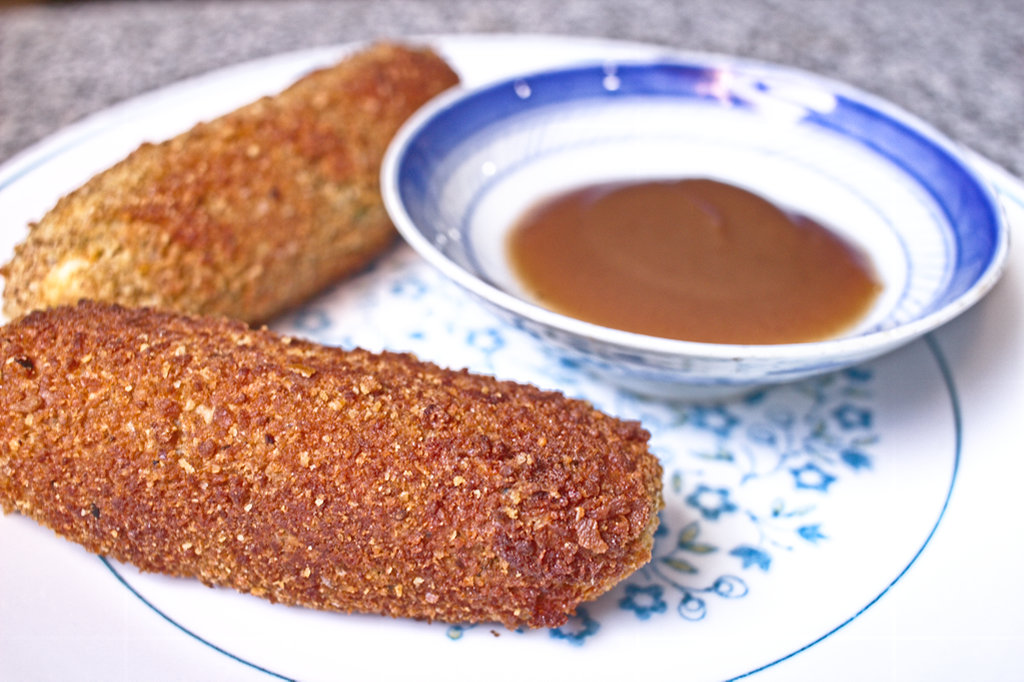
I thought I’d found a pattern, but it turned out these were the only two Welsh dishes I could find that were meatless but named after types of meat. I don’t know if this does speak to the frugality of the Welsh; it may say more about their love of cheesy snacks that go well with beer than anything.
Kill the W(elsh R)abbit
Cookbook author Felicity Cloake published a guide to making the perfect Welsh rarebit in The Guardian almost 10 years ago, discussing which cheese to use, which seasonings, which bread, even whether to use beer, wine, cider, or milk as the liquid ingredient. The recipe she ended on though doesn’t appear to use a roux to help keep the melting cheese from breaking and clumping, where most recipes follow the standard bechamel+cheese or mornay sauce method I prefer.
I like what she has to say about the seasonings–Coleman’s English mustard powder and Worcestershire sauce both seem like perfect accompaniments for a cheddar cheese, and the nutty/roasty flavors of a dry stout seem like they’d be a good match as well. First I tried making it with what I had left of the Welsh Caerphilly cheese I’d ordered for the Glamorgan sausages. My basic recipe for all the following cheese sauces was:
Basic cheese sauce for Welsh Rarebit
Ingredients
- 2 T butter
- 2 T flour
- 1/2 t Coleman’s mustard powder
- 2 dashes Worcestershire sauce
- 1/3 C milk
- 2/3 C beer
- Fresh-cracked black pepper
- 4-6 oz cheese grated
Instructions
- Start by melting the butter, then add the flour and mustard powder and cook for a minute or two.
- Slowly add the milk and beer, an ounce or so at time, letting each addition of liquid fully and smoothly incorporate into the fatty flour and come up to temperature before adding the next
- Once all the liquid has been added, crack some black pepper into the resulting sauce, and mix in a couple of dashes of Worcestershire
- Slowly add the cheese, an ounce or so at a time, letting each addition melt fully, smoothly incorporate into the sauce, and come up to temperature before adding the next
Notes
- Pick whatever beer or cheese you like
- A maltier rather than hoppier beer works better most of the time
- A sharper rather than milder cheese is also preferable
Starting with a toasted slice each of buttered sourdough and seeded whole wheat

Toasted sourdough 
Toasted seeded whole wheat
I spooned the Caerphilly-based rarebit sauce onto the bread, spreading it out to the edges but not beyond, so that I could broil the bread without making a mess or burning the bread edges.
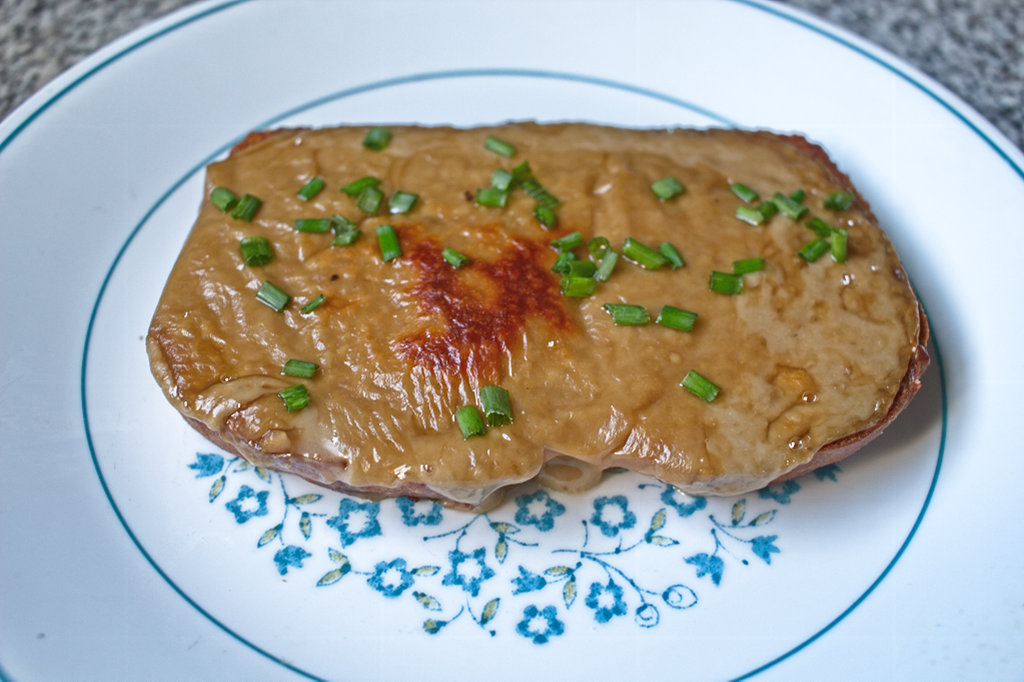
The color of the sauce, though, left something to be desired, as did the flavor. White cheese + dark dark brown beer make for a somewhat peanut-butter-colored cheese sauce. (That is the most flattering comparison I can come up with) Cloake’s comments that Caerphilly was too delicate for Welsh rarebit were dead on–while I could taste the cheese fine in the Glamorgan sausage, here I tasted Guinness, Worcestershire, and mustard, roughly in that order.
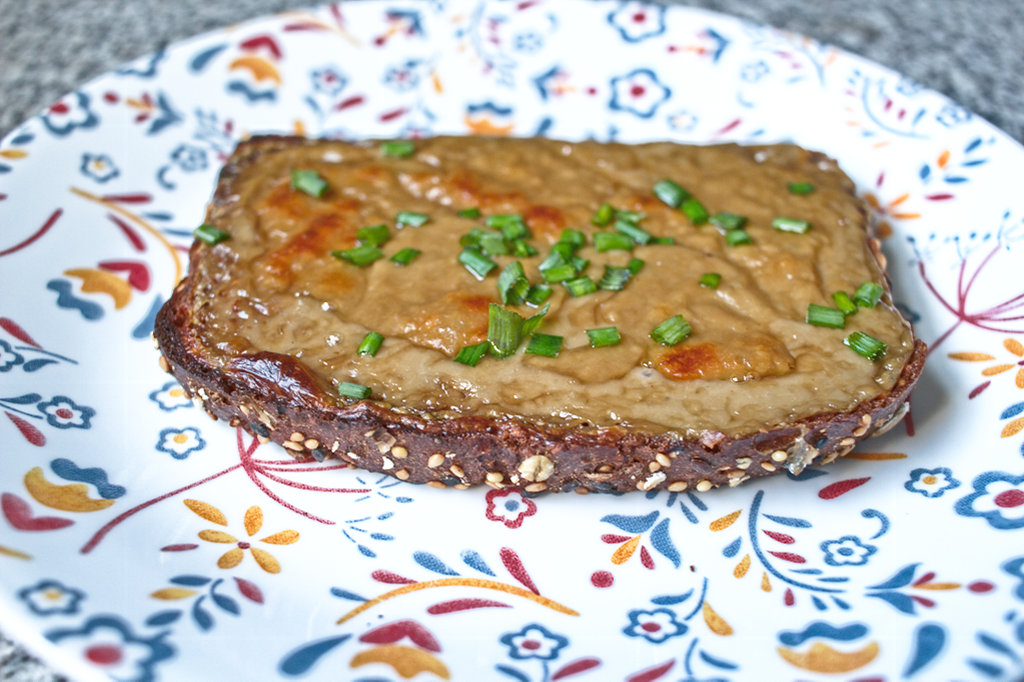
I wasn’t pleased with the flavor or color of my first attempt, so I decided to try again. The Welsh cheddar that I bought was also white, and I was still hooked on the idea of using a stout, so I decided to try and make up for the light-colored cheese by doing what creameries do when they decide they want their cheese to be yellow-orange instead of white.
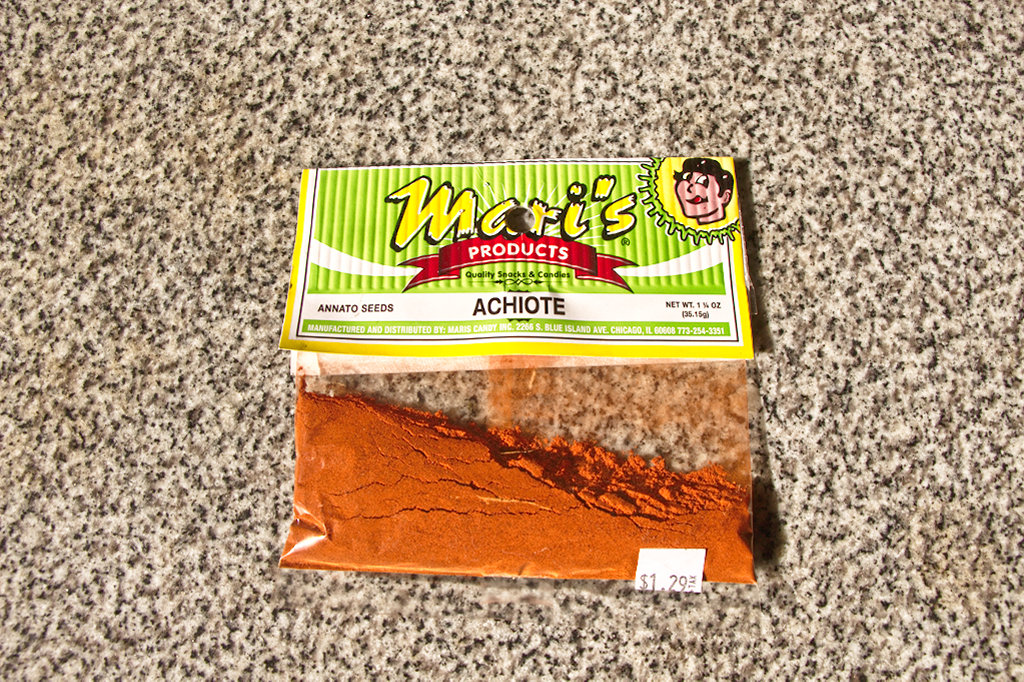
Achiote powder is made from annatto seeds and is commonly used as an ingredient in Mexican dishes such as al pastor and cochinita pibil. Annatto-based food dyes have also traditionally been used as a natural coloring source in making cheeses such as cheddar, red Leicester, Colby, and others. I added 1/4 of a teaspoon to the flour before making the roux, and to aid both in the color and the richness of the sauce, mixed in an egg yolk after taking it off the heat.
Achiote may be a powerfully orange powder, but sadly, not as powerful as the color of Guinness Draught Stout.
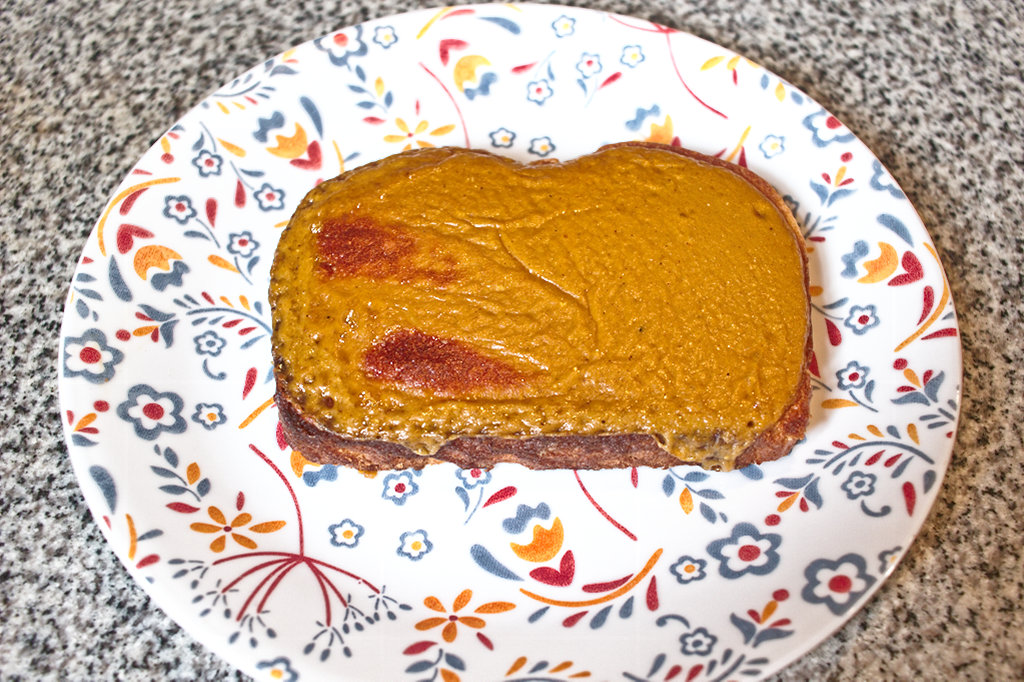
At least the flavor was right. The Welsh cheddar had a nice strong flavor, more powerful than many “sharp” or even “extra sharp” American cheddars I’ve tried. The balance here between stout and cheddar was fine, with the Worcestershire’s salty and malty notes splitting the difference. The sourdough bread, though, was slightly undertoasted and the fine balance between crisp and gooey textures was not right.
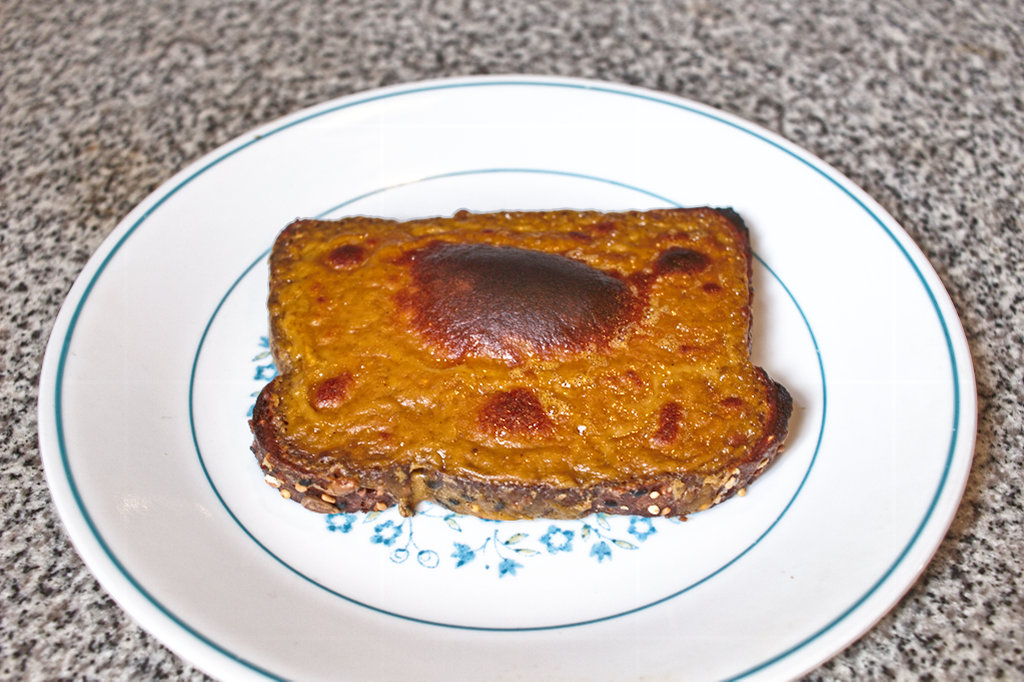
The seeded whole wheat fared a little better texturally but the problem was in the toasting process. I’d been buttering one side of the bread and then toasting it under the broiler, but the buttered side of bread was not crisping up properly. What I really wanted was some nice, well-toasted sourdough like I’d had at both Pleasant House and The Northman, and a nice, attractively-colored sauce to top it with. The stout was going to have to go.
I had a little of the Welsh cheddar left, which I supplemented with some locally-made bandage-wrapped cheddar, which was surprisingly a little more mellow than the Welsh cheddar but had some nice earthiness to it. I made the sauce using my standard recipe above but replacing half the butter with bacon fat as a nod to the Charlotte MacLeod recipe of my youth. I used 5 Bridges Kolsch this time, a German-style beer brewed only a few miles from my house. It’s about as far from a Welsh ingredient as you can get but light in color and malty in flavor. I still added the egg yolk at the end, but toasted the sourdough without butter, cut it into pieces, arranged it on a broiler-safe plate, poured the sauce liberally over the top, and put the plate back into the broiler just long enough to get the cheese bubbling again.
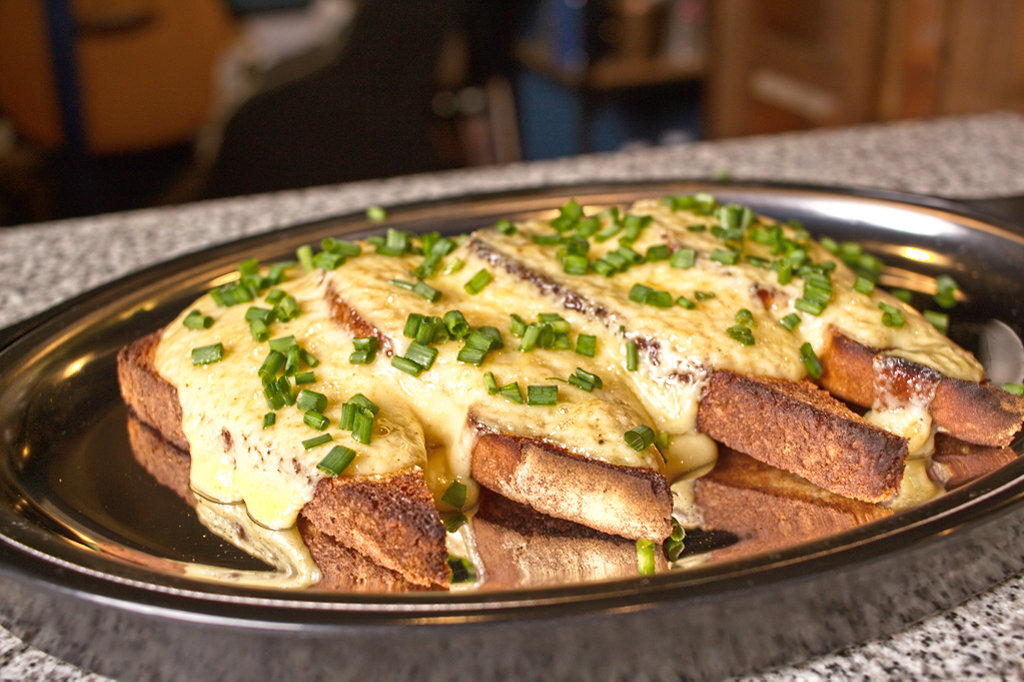
This was as good a version of Welsh Rabbit as I was able to make this month. I liked the brightness of the Northman version a little better, but I came pretty close to nailing it. I’ll always try this dish when I see it on a menu, but it looks like my 30+ year quest to perfect the recipe may be nearing its end. Thanks for the obsession, Charlotte MacLeod!

I like sandwiches.
I like a lot of other things too but sandwiches are pretty great


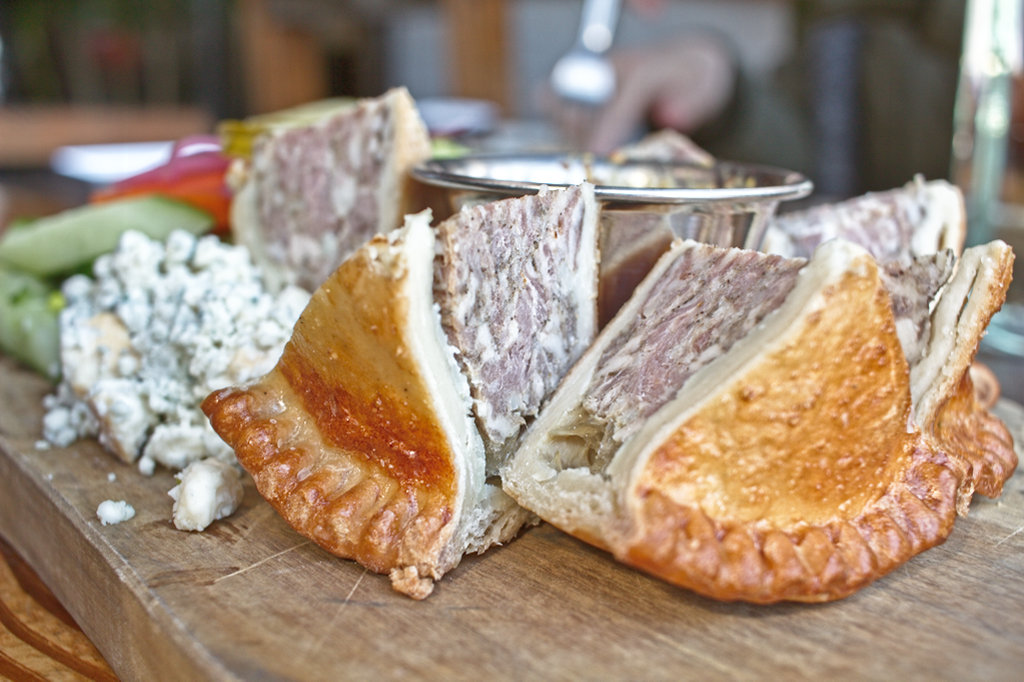
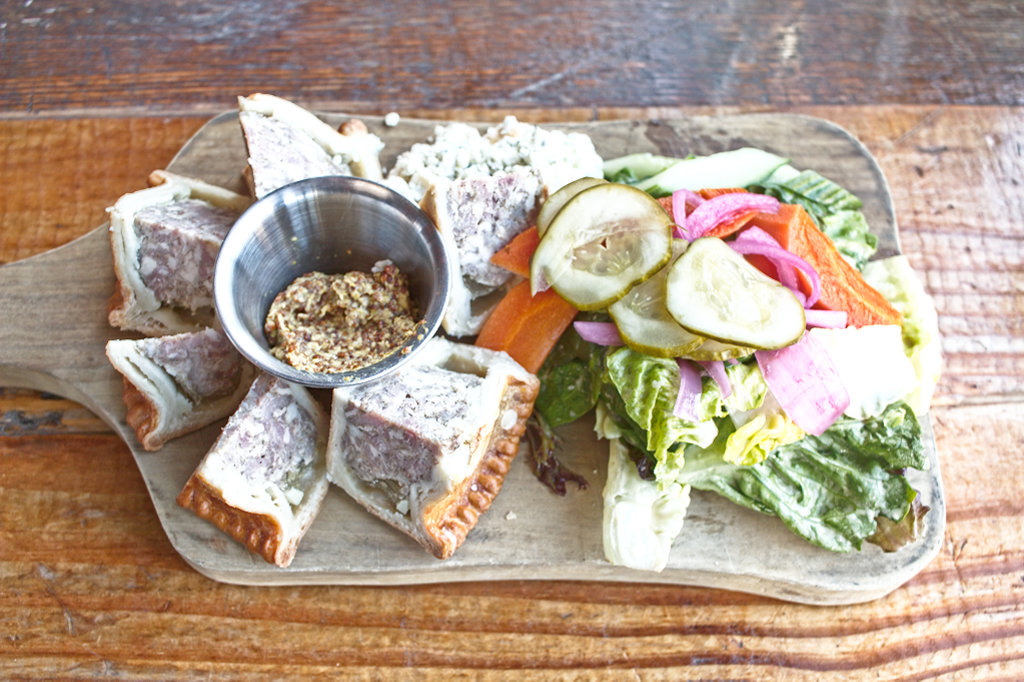
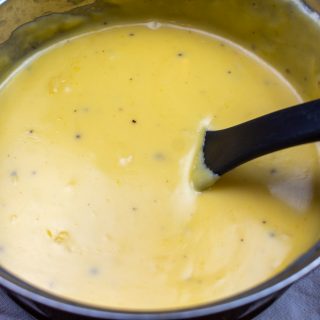
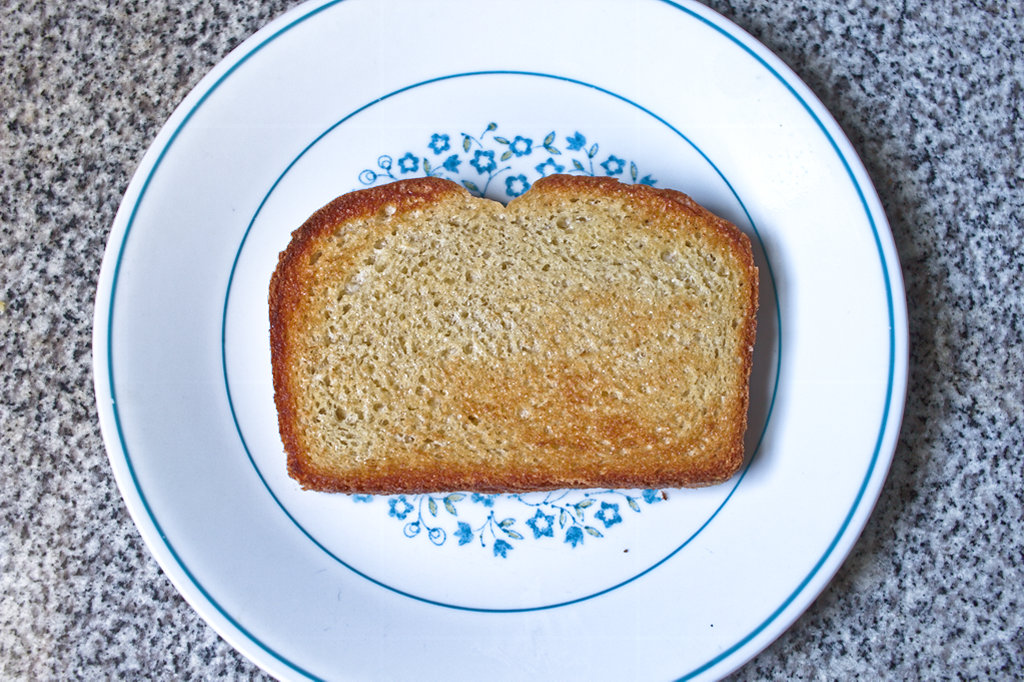
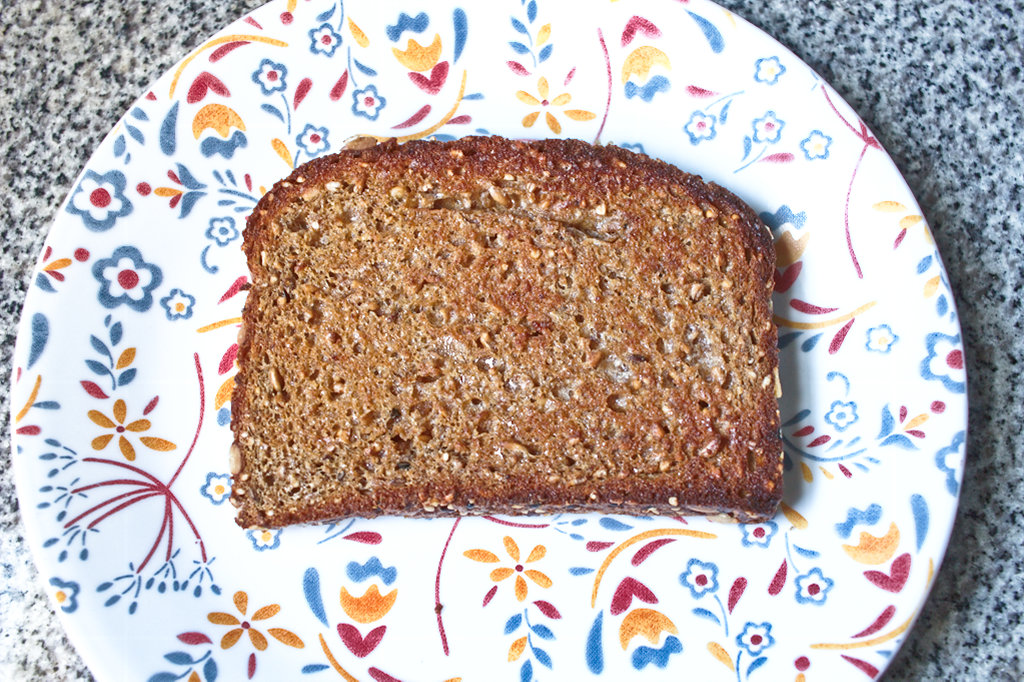
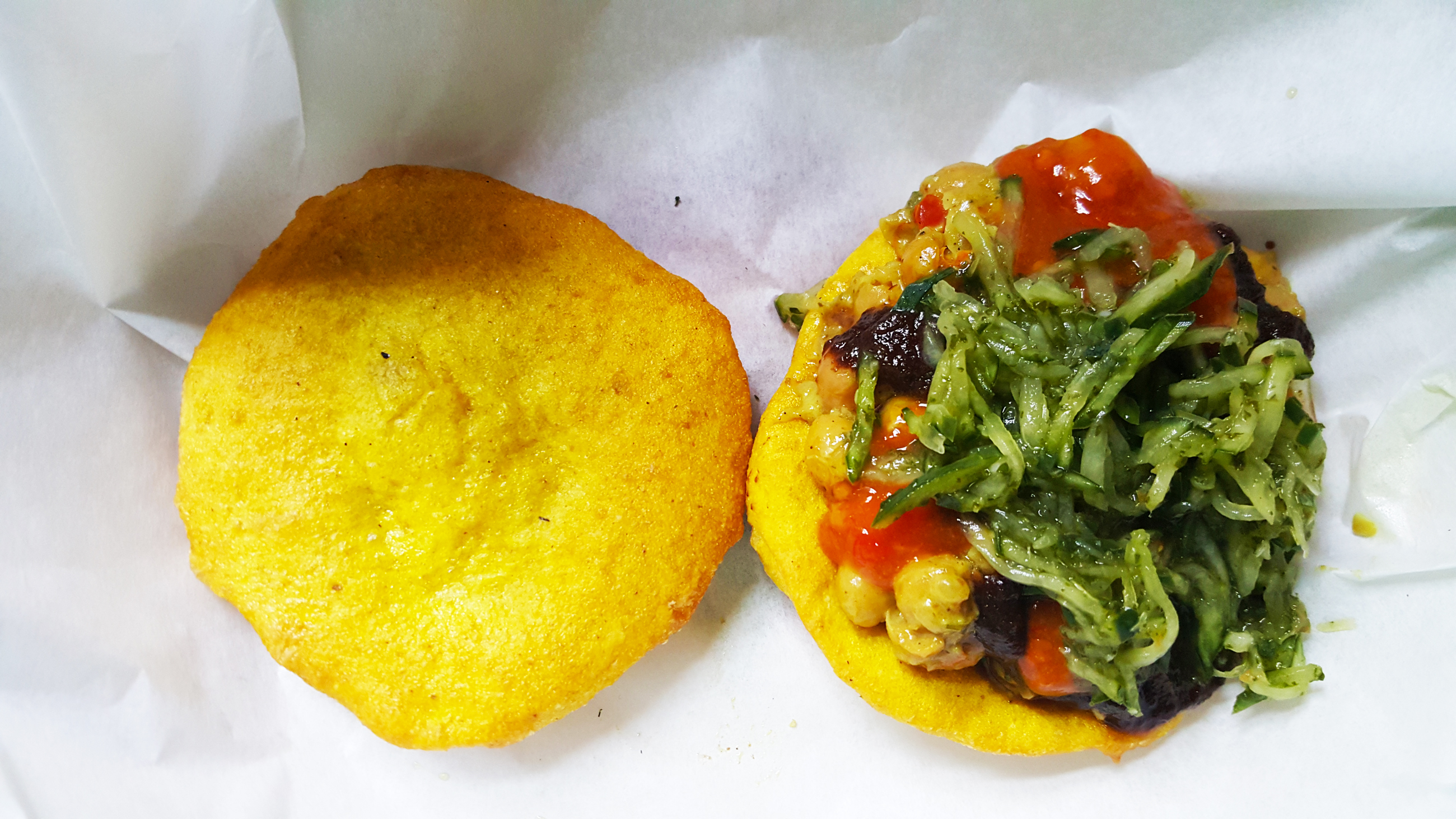
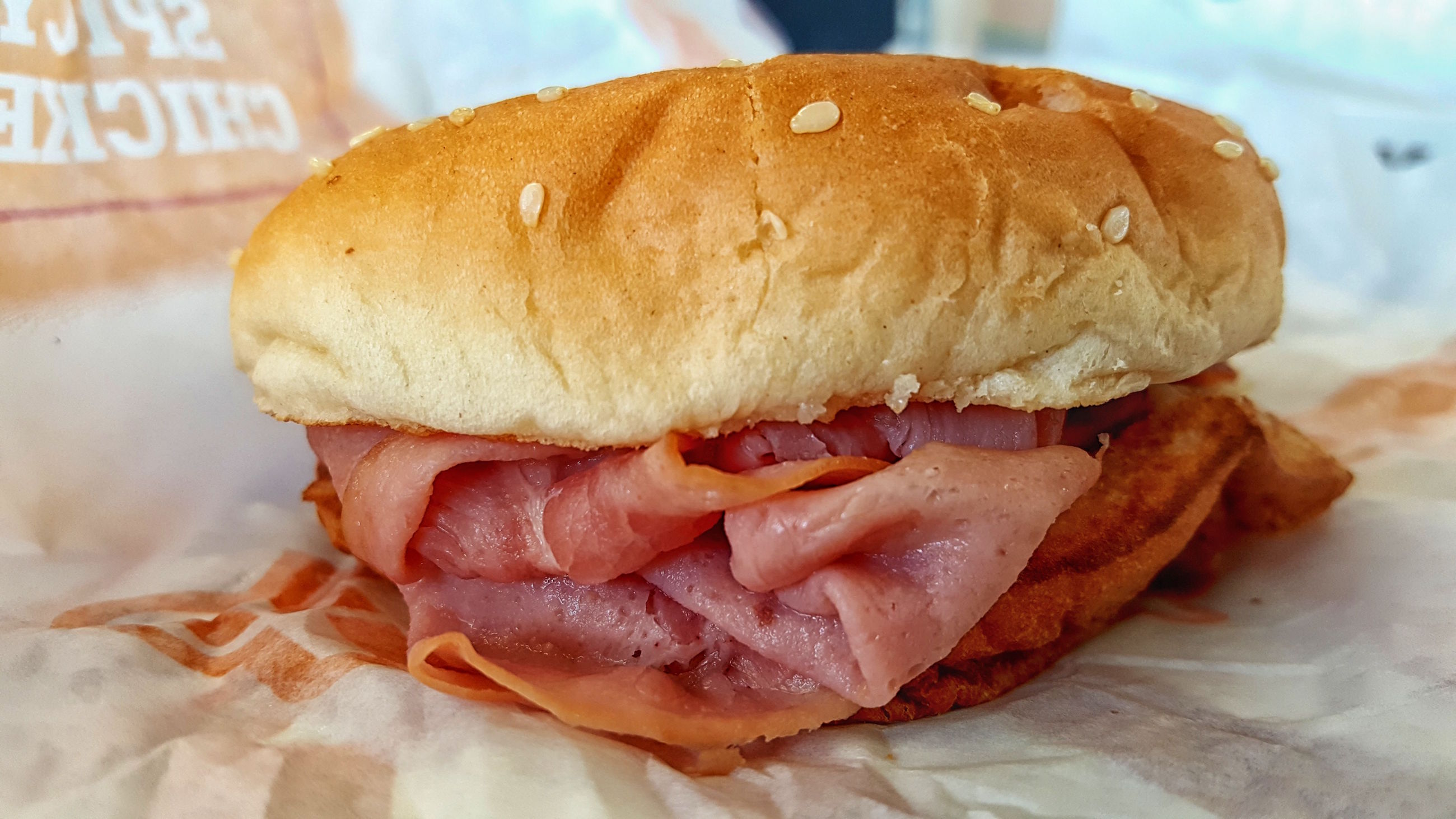
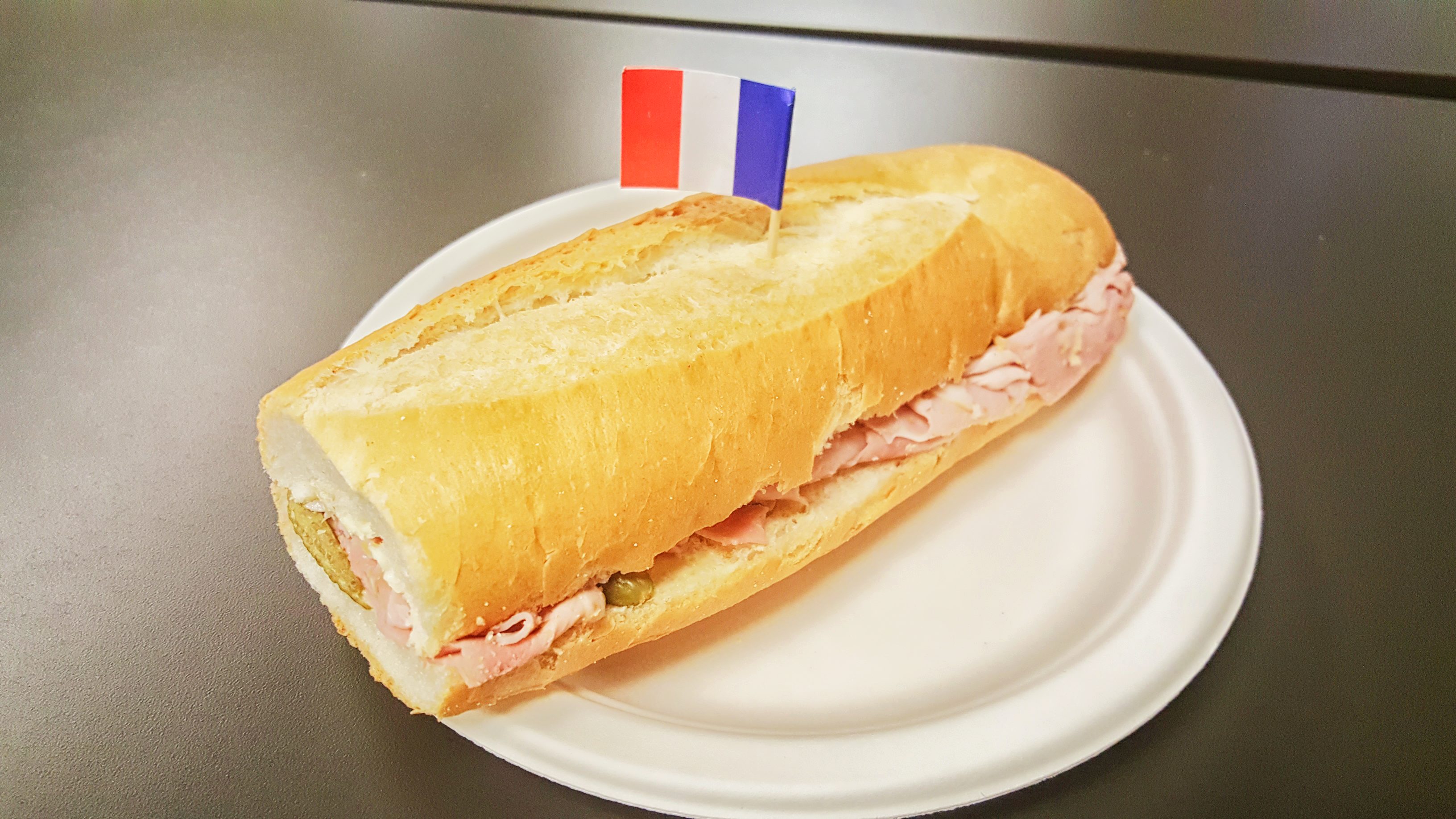






Recent Comments